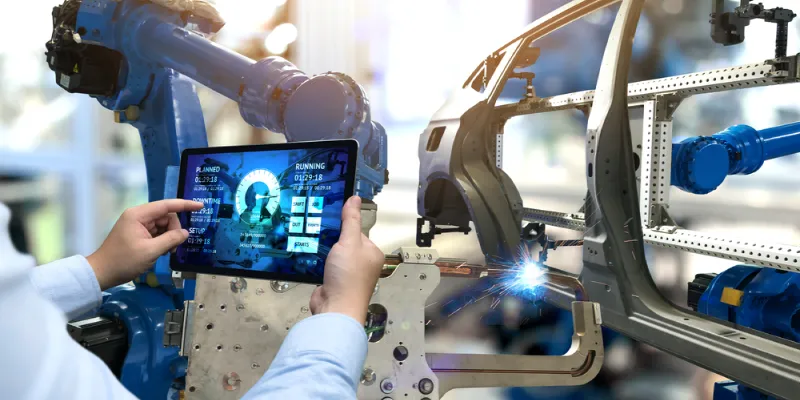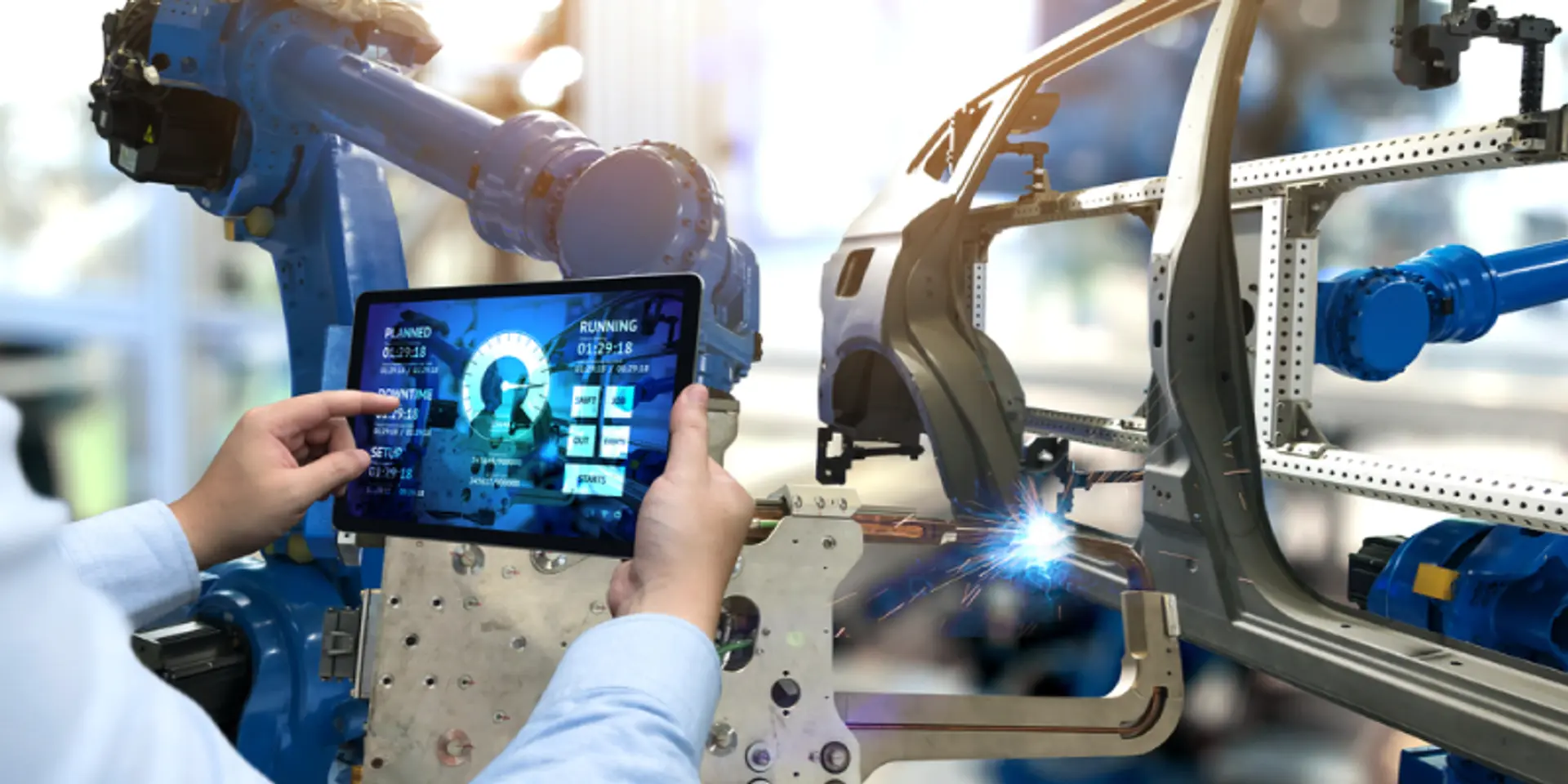
Cisco
View Brand PublisherHow digitisation is a real partner in transforming manufacturing
While the IT and mobile revolutions march on in India, the manufacturing industry is in danger of being left behind. Manufacturing is critical to the economy – with added impetus from the Make in India initiative, it accounts for over 16 percent of India’s GDP and for 30.4 million jobs (source: 6th Economic Census of India).
Globally, manufacturing has played a key role in increasing overall productivity, but this is yet to happen in India, chiefly because of the slow progress of automation and digitisation. If this gap were to be addressed, the manufacturing industry in India will lead to a significant increase in employment as compared to other sectors, severely boost domestic revenue and make a great impact on India’s economic growth. As things stand, manufacturers are unsure of how digitisation can significantly improve a business, how it pays for itself, and how its success can be measured. Terms like Industry 4.0, Smart Manufacturing, Industrial IoT, etc. have made this evolution sound complex. In fact, it is not. And the benefits it provides directly impact your business outcomes. If we look at the road to smart manufacturing through the lens of business outcomes, there are four key aspects to look at. I have outlined those here.

1.Increase productivity and reduce downtime
There are an estimated 60 million machines in factories around the world at 60 million; 90 percent of these are not connected. And 70 percent of machines are over 15 years old. And where there are new, connected machines that do generate data, they do so in isolation. So traditional manufacturing setups depends on manual data gathered from the shopfloor, which is neither recent nor can it project the big picture. This is where big data analytics changes things – when you add a digital layer over your existing equipment, you start generating data in real time.
This data is then fed into an analytics solution that gives you a real-time view of how efficiently your shopfloor is functioning – which sections are lying idle or consuming more power than they should. You can deploy preventive measures and eventually predictive measures. These measures prevent unplanned downtime, thus preventing losses.
In effect, they ensure that your overall equipment effectiveness (OEE) – a key measure of productivity – is higher. You can do you do more with less, better utilise existing assets, reduce inefficiencies and save on expenses.
2. Tracking resources, material and people
A key benefit of digitisation is the automated tracking of resources, material and people. A large number of manufacturers are already using basic RFID technology which ensures both productivity and safety. By recording when activity starts, pauses and ends, a business knows exactly how much effort workers are actually putting. Knowing where they are also helps keeps them away from danger zones and provides alerts if they are too close to a potential threat. Once workers, teams and locations are connected and can interact with each other easily, it accelerates innovation across teams.
Businesses can also easily deploy material tracking systems to know where a particular part is, how long it’s been there, what’s it been deployed for and how well it’s working. If the stocks of a particular component are running out, orders can be automatically placed. When you extend this intelligence to all parts and the overall supply chain, you’ll know where each part came from too. For example, in the Automotive sector, is there a product recall, traceability of parts can help ensure that number of products recalled is limited to those with faulty parts, versus recalling an entire batch. In the Dairy industry, for instance, smart solutions provide real-time monitoring of milk quality to prevent adulteration and to ensure that the temperature of the milk is maintained at optimum levels during transit from one facility to another. Less-than-optimum levels trigger warnings that ensure intervention at the right time.
3. Unification industrial security for IT and OT applications
It is critical for manufacturing plants to unify the security surrounding their physical and virtual assets, as well as their reputation and privacy. A piecemeal approach to security is no longer effective. So in addition to protecting their IP, it is important that their security infrastructure covers plant assets and production integrity too with security products, technologies and solutions that are common to both. This unification will ensure that approach to security with respect to IT and operational technology (OT) is over-arching and not an afterthought.
Which brings us to the next step, how do you go about digitizing a manufacturing setup? Here’s how:
Build a digital network architecture for the shopfloor
Connectivity and IoT: The use of T in manufacturing has grown haphazardly in the past for a variety of reasons so networks are not properly designed, which in turn leads to downtime. On the shopfloor, downtime implies huge losses to the top and bottom lines. Hence a sound digital foundation/network infra connecting all assets and machines if the foundation of a digitised shop floor. Once you have this platform in place, all the various sections of the shopfloor or assembly line will begin generating data.
Analytics: The data generated from the shopfloor, i.e., the entire set of machines using various tools, controllers and sensors can then be extracted, filtered and analysed based on the key performance indicators (KPIs) that a business wants to implement. An analytics layer helps interpret the analysed data to provide real-time insights to help real-time decision making.
What’s important to note is that doing this does not mean that all old machines need to be replaced; rather it ensures that there is data flowing in even from these machines by adding the right set of sensors, controllers, etc.
Increase mobility and collaboration
Wireless adoption on the sensor and automation side in manufacturing is on the rise. Workers don’t need to physically key in data at their workstation; they can do so using ruggedized devices wherever they are on the shopfloor. This in turn improves productivity. The use of pervasive industrial wireless via sensors increases uptime and safety and speeds up go-to-market.
Implement a comprehensive security architecture
Operating systems on devices across the shopfloor are often left vulnerable and are not always patched as regularly in the services sector. A security solution cannot be an afterthought. It has to be built in at the foundation level, at the level of the machines and controllers. Most have an ethernet interface, which means they too need to be protected. A firewall alone is not sufficient, rather a complete security architecture needs to be in place. This may seem daunting, but digitization service providers do offer will help you every step of the way from evaluating your requirements to designing and implementing your security setup.
How do you measure the benefits of digitisation?
Asking how much digitisation will cost is not quite the right question to ask. Rather, it is important to understand what it achieves and how it pays for itself. What it boils down to is the total cost of ownership – even a short spell of unplanned downtime leads to a loss. If a digitised solution is able to prevent outages such as this even twice in a few months, it would easily recover the cost of digitisation.
As such, an architectural approach is key. Currently, many manufacturers are digitising, but this is happening in isolated bits and pieces, which again does not provide a business owner with a clear picture of the entire business. Which means the results are less than optimum. A slightly higher capex would integrate everything and can be easily recovered through this architecture preventing losses, downtime, or cyber attacks. Some benefits are immediately measurable – savings in electricity usage or faster time to market because of accurate material tracking. Others, such as better collaboration with suppliers leads to other types of synergies. Even a 10 percentage-point increase in OEE will mean not just better productivity but also resource and cost savings.
Having a digital factory doesn’t just mean increasing the productivity of the your assets and minimising unplanned downtime. What it does is give you real-time insights that you can access and use to take business decisions that will, in fact, transform your business.







